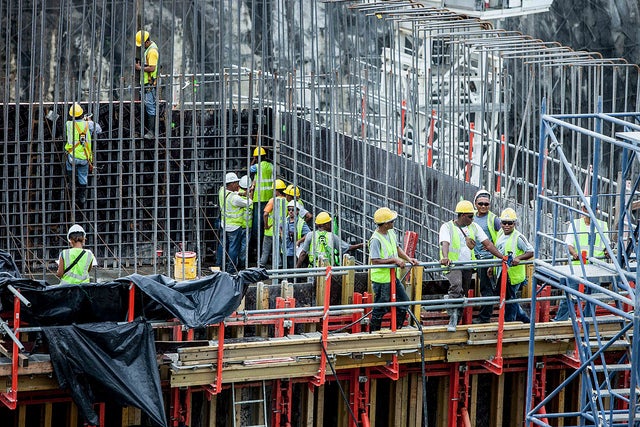
Infrastructure needs in developing countries are great and will continue to rise over the next decade. To sustain the projected global GDP growth between 2012 and 2030, US$57 trillion is needed in infrastructure investment, according to McKinsey's estimates.
In emerging markets infrastructure investment needs have been forecast to range between US$14.4 and US$15.7 trillion in emerging markets from 2008 to 2020.
Since funding infrastructure projects usually requires a long-term and large investment, emerging markets are struggling how to meet these needs through public investments or even traditional bank funding.
Figuring out how to finance investments needed in infrastructure is one of the key issues on the G20 agenda and has also been identified in the Sustainable Development Goals.
While private-public partnerships are usually mentioned as one way to bridge this financing gap, using Islamic finance or other asset-backed financial mechanisms to fund long-term development has started to gain traction in recent years.
As part of events held around the G20 Summit, the World Bank Group with the Turkish Capital Market Board and Borsa Istanbul organized a conference on “Mobilizing Islamic Finance for Long-Term Investment Financing,” which took place on November 18-19, 2015 in Istanbul.
I participated in the conference and delivered a keynote message on behalf of the World Bank Group.
The conference attracted more than 250 participants from the public and private sector, including various experts, academicians and market practitioners from over 15 countries, to look at the links between long-term finance and economic development.
Participants discussed whether alternative asset-based financial mechanisms, such as Islamic finance, can be used to finance large-scale projects and to mobilize domestic and international resources, and what policy measures are needed to create an enabling legal and regulatory environment.
Here are the main points I took away from the conference.
- Since Islamic finance is relatively new and is not well understood, more needs to be done to improve financial literacy of stakeholders, including policy makers, investors and market participants about this type of asset-based and equity finance.
- Also, there is a need to look holistically at various market segments of Islamic finance, rather than narrowly focus on specific Islamic finance instruments. Capital markets, banking and the insurance sector of Islamic financial industry need to play complementary roles in providing innovative solutions.
- Some speakers suggested to rebrand Islamic finance as “asset-based” or “participatory finance” as a way to gain wider acceptance of this type of finance. This suggestion is gaining more momentum to reduce the sensitivity associated with the religiosity aspect and to encourage a view based on the merits of responsible and ethical finance. For example, Turkey treats Islamic financial institutions as participatory financial institutions, which has had a positive impact.
- Sukuk, or Islamic bonds, are increasingly being used as a possible financing mechanism. However, its success will largely depend on development of institutional investors, regulatory and legal framework to encourage asset-based finance, Takaful (Islamic insurance), and diversification of financial products for resource mobilization and risk management.
- Taxation, ownership rights and bankruptcy laws remain key challenging issues to further develop asset-based and equity finance. Taxation is relevant in sales contracts, while ownership rights and insolvency laws become important for giving the investors real ownership to the assets that are being financed, especially in case of cross-border and sovereign assets.
- Since asset-based and risk-sharing finance requires reduced information asymmetry, participants stressed the need to enhance transparency, disclosure and governance to leverage Islamic finance for long-term investment financing to lend more credibility and sustainability.
- Finally, government support will be crucial to developing strategic long-term planning and taking steps to put in place building blocks within the three main sectors of the industry -- banking, capital markets and insurance -- to promote asset-based and risk-sharing finance, such as Islamic finance.
To achieve this objective, the World Bank and IMF prepared a joint G20 note on integrating Islamic finance with global financial system outlining a roadmap for national and international stakeholders to realize the potential of Islamic finance for development.


Join the Conversation